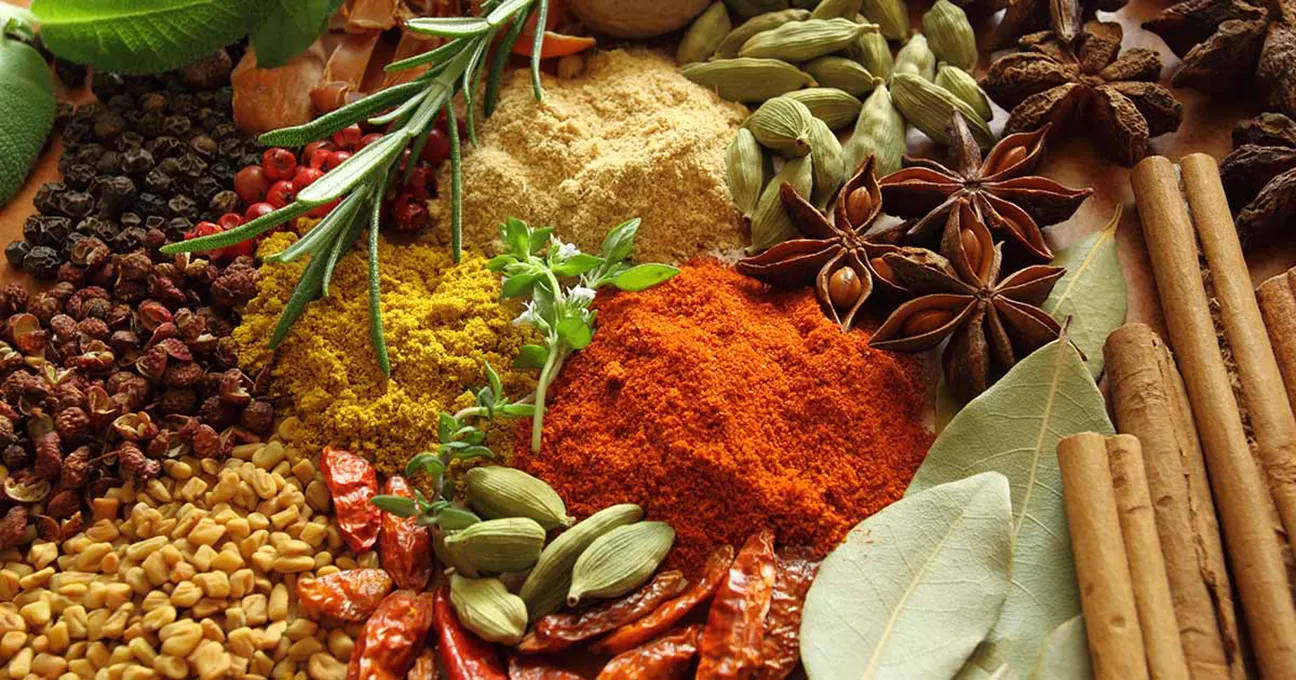By Cheryl Raeside
Cooking Matters Assistant, Tarrant Area Food Bank
You’re often told to cook with more herbs and spices when you need to reduce your intake of sugar, salt or fat. That’s good advice, but how to use it? Here’s our practical guide to selecting, storing and using herbs and spices.
Where It All Begins
First, what’s a spice and what’s an herb? No one can quite agree. Herbs usually come from the leaves or flowers of plants. Spices, more pungent because they contain more essential oils and flavoring compounds, usually come from the seeds, bark and roots of plants. Unfortunately, there are more exceptions than examples. The easiest, practical definition is that herbs and spices are from edible plants used to enhance other foods. They can be fresh or dried and, when dried, they come in whole, crushed or ground forms.
Herbs and spices can add aroma and flavor to breading, batters, gravies, sauces and stir-fried foods with few calories and little or no fat. Remove 1 tablespoon oil from a recipe and you remove 14 grams of fat and 120 calories.
Shaking Things Up
Here are some herbs and spices to try with different types of protein:
- Beef – bay leaf or nutmeg
- Lamb – rosemary and mint
- Pork – garlic and pepper
- Veal – curry powder or ginger
- Chicken – tarragon or thyme
- Fish – dill and paprika
Use garlic and onion powder; avoid garlic and onion salt. Buy lemon pepper or spice blends, but look for the salt-free varieties. By cutting the salt in a recipe from 2 teaspoons to 1 teaspoon, you reduce sodium by as much as 2,400 milligrams.
Add fresh herbs in the last 10 minutes of cooking to prevent them from losing their flavor and aroma. Dried herbs and spices can stand the heat. When ground and crumbled, they release flavor more quickly. Whole spices release flavor and aroma slowly and are best for stews and slow cookers. Dried whole bay leaves must be removed because they never soften and can cause choking or harmful cuts in the throat.
Go easy when you start experimenting with herbs and spices. You can always add more but you cannot subtract when you overdo it. Start with ¼ teaspoon of ground spice for 4 servings of a meal, 1 pound of meat, or 2 cups of soup or sauce.
When you double a recipe, don’t automatically double the spices and herbs. Start with 1½ the amount and adjust if you need more. When a recipe calls for fresh herbs but you only have dried, remember to use less. One-fourth teaspoon dried or 1 teaspoon crumbled equals 1 tablespoon of fresh herbs or spices.
Flavors that Last
To preserve the flavor and color of dried or crumbled herbs and spices, avoid moisture, light and heat. The best place to store them is in a closed kitchen cupboard away from heat and moisture, in tightly covered containers. Avoid storing them above the oven or microwave or on the kitchen counter in a spice rack filled with clear containers.
Date dried herbs and spices when you buy them and discard unused portions in a year—two years for whole spices. To check if older spices are still pungent, crush a little between your fingers; if the aroma is full and strong the spice will still be flavorful. Don’t smell pepper or chili powder as both can irritate your nose.
Think of fresh herbs like a bouquet. You can snip off the stems diagonally and place them in a container with an inch of water. Change the water daily and the cut herb will last about a week.
Many people like to freeze fresh herbs. Though frozen herbs will never resemble fresh again, they are fresher than the dried varieties. Wash, drain and pat or spin dry the herb you want to freeze. Pick leaves off stems of herbs (or cut them with kitchen shears) and freeze them in small zip-lock freezer bags.
You can also make herb cubes by pureeing fresh herbs in a blender with a small amount of water and freezing in ice cube trays. Once frozen, the herb cubes should be stored in a zip lock freezer bag. Herb cubes are good additions to stews, sauces, gravies and soup.
Besides adding flavor, herbs and spices are rich in antioxidants and other health-promoting substances. Though we eat them in small amounts, when used regularly, they are a beneficial addition to your overall diet.
Visit our blog in the future for healthy, budget-friendly recipes and nutrition tips. Learn more about Tarrant Area Food Bank’s Nutrition Services program.
Reference: eatingwell.com



